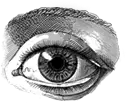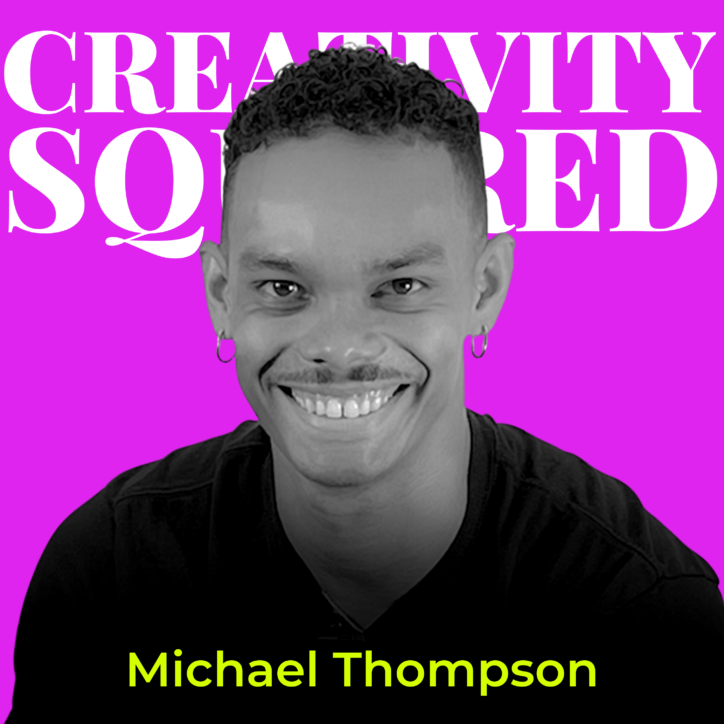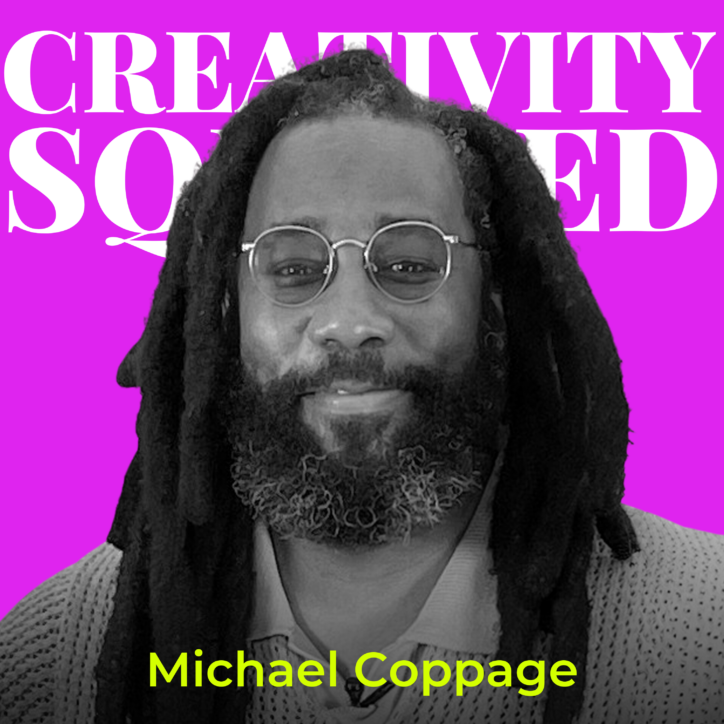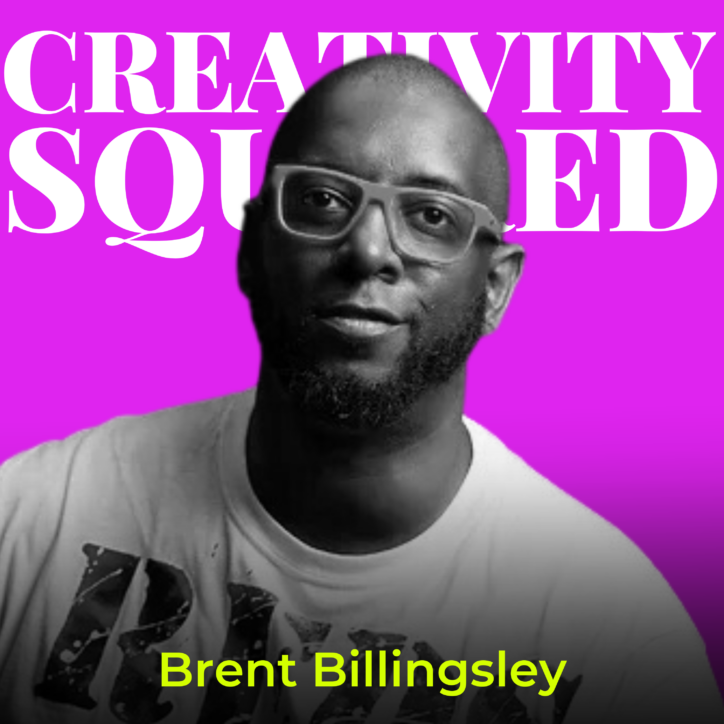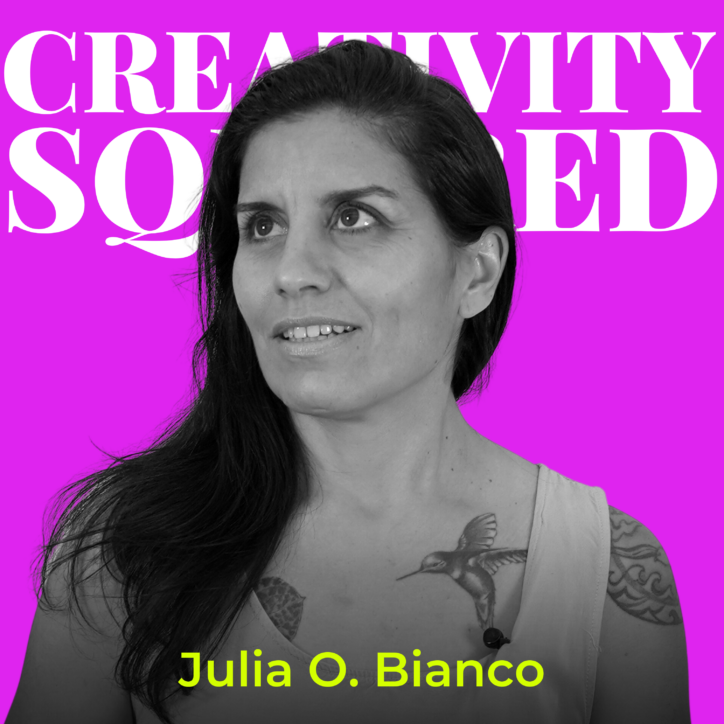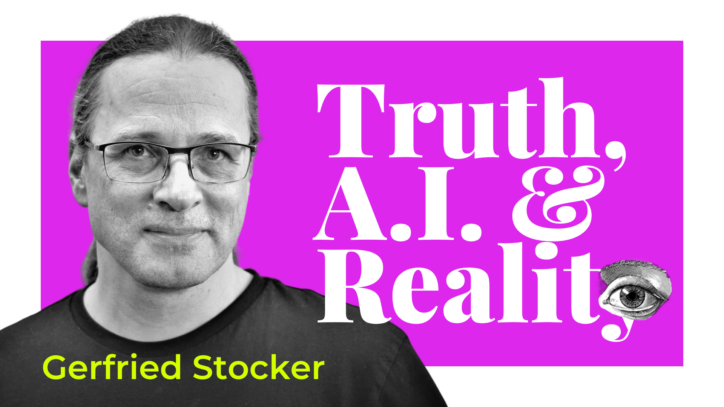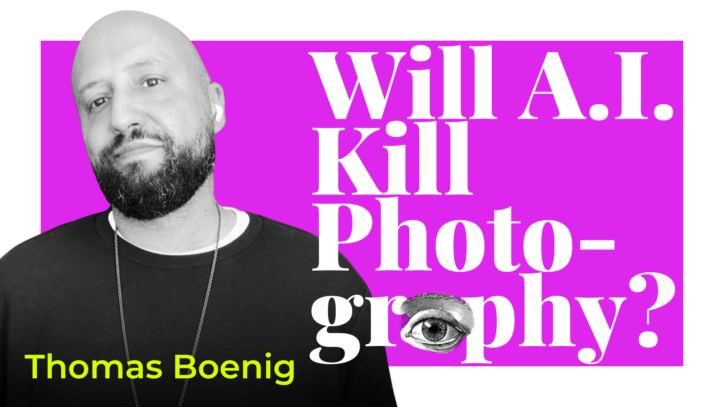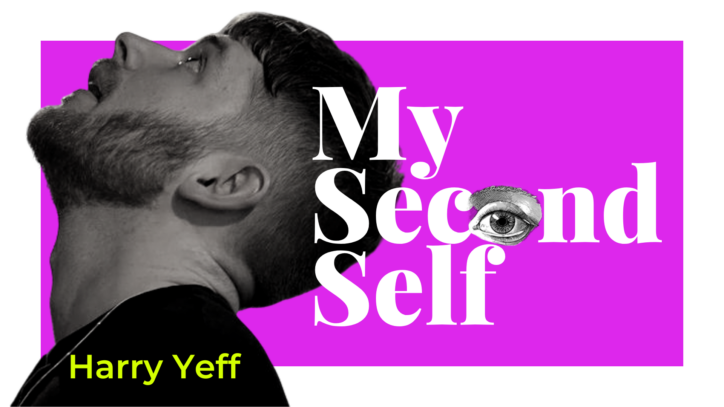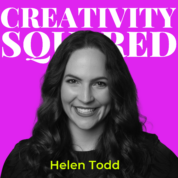
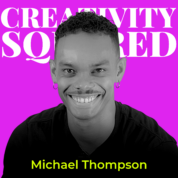
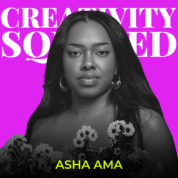
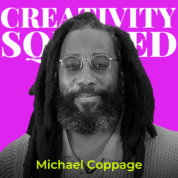
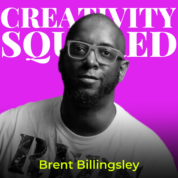
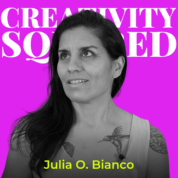
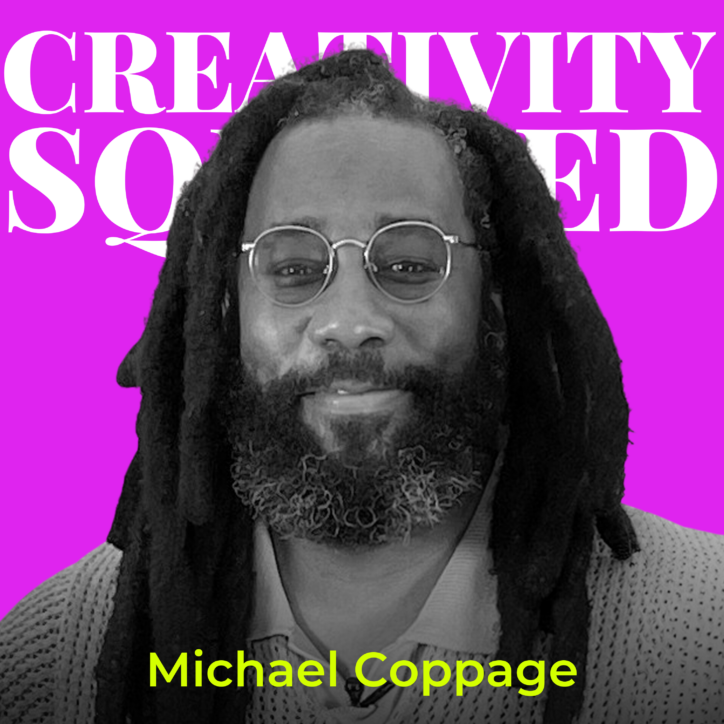
Ep13. ArtsWave “Truth & Healing” Part 1: Michael Thompson, ASHA AMA, Michael Coppage, Julia O. Bianco & Brent Billingsley
Creativity Squared is proud to share a special series with our partner ArtsWave that will be coming out every three weeks. These podcast episodes highlight the phenomenal artists and grant recipients selected for this year’s ArtsWave Black and Brown Artists Program!
Today’s podcast focuses on the vision of five artists for the world they want to live in and expressed through their art. You’ll hear about (each of these links to their accompanying blog post for each artist):
- “Murmurations” by Michael Thompson, ArtsWave “Truth & Healing” Artist
- “AGAPE” by ASHA AMA, ArtsWave “Truth & Healing” Artist
- “Hands Behind Your Back!” by Michael Coppage, ArtsWave “Truth & Healing” Artist
- “I’m Still Listening” by Brent Billingsley, ArtsWave “Truth & Healing” Artist
- “Togetherness” by Julia O. Bianco, ArtsWave “Truth & Healing” Artist
They all talk about their individual projects and how it fits into this year’s theme: Truth & Healing.
Who Is ArtsWave?
ArtsWave is a nationally recognized non-profit that supports over 150 arts organizations, projects, and independent artists. Because it’s important to support artists, 10% of all revenue generated from Creativity Squared goes to ArtsWave to support their Black and Brown Artists Program. The mission of Creativity Squared is to envision a world where artists not only coexist with A.I., but thrive.
And in case you missed it (or want to revisit it), listen to episode 9 of Creativity Squared featuring Janice Liebenberg who is the Vice President of Equitable Arts Advancement at ArtsWave to hear her talk about how the arts can bring people together and for more on ArtsWave.

Truth & Healing Showcase
We had the honor of interviewing all of the artists at the opening of Truth & Healing Visual Art Exhibition, which is on display through September 10 at the National Underground Railroad Freedom Center’s Skirball Gallery in Cincinnati, OH. It’s truly an inspiring, humbling, and grateful privilege to share their stories with you.
This year’s Showcase is focused on the themes of healing, rebirth, and reconnecting. Projects explore and build upon the current artistic commentary of health and race and connect it with historical events and visions of a more equitable future.
This year’s Black and Brown Artists Program cohort reflects a vibrant collection of diverse art forms created by an equally diverse group of 18 artists. Their mediums include couture fashion, painting, and sculpture — along with film, musical composition, podcasts, theater, dance, and multidisciplinary works.
The projects not only represent the African American experience, but also the experiences of those with Mexican, Lebanese, Somali, Argentinian, Zimbabwean, Guatemalan, and Indigenous heritage.
The intention of these interviews is to give these artists another platform to share their art and the truth expressed through it, as you never know what ripples will turn into waves.
Full Artist Video Interviews
Each podcast episode in this series will have accompanying videos with the full interviews with each artist. Watch them here or on our YouTube playlist. Each also links to an artist-dedicated blog post too.
“Murmurations” by Michael Thompson
“You are extremely powerful as an individual. You have a massive capacity to change your community and to change the world.”
– Michael Thompson
Meet Michael Thompson, an interdisciplinary artist, designer, ethnographer, and poet. His practice focuses on human ecology and nuance and he weaves together ancient and contemporary mediums to create multiexperiential works of art.
Click here for the accompanying blog post featuring Michael.
“AGAPE” by ASHA AMA
“I feel like I am the fulfillment of one of my ancestors dreams. And so my hope for the future is that my kids can just live in a world where we can be free.”
– ASHA AMA
Meet ASHA AMA, a fashion designer & Project Runway All Star. She has designed for Zendaya, Little Big Town, & Lizzo’s Special tour. As a Black woman, she often is misunderstood, but is able to thrive in fashion because she was raised with a great Knowledge of Self that she tries to impart to others.
Click here for the accompanying blog post featuring ASHA.
“Hands Behind Your Back!” by Michael Coppage
“ArtsWave has an imperative to bridge cultural divides. None of my work is made for a Black audience, really, because Black people understand this experience. We live it.”
– Michael Coppage
Meet Michael Coppage, a conceptual artist using an interdisciplinary, dialectical approach to address social issues. Michael is a 2023 ArtsWave Black and Brown Artists Program Grant Recipient and “Truth & Healing” Artist.
Click here for the accompanying blog post featuring Michael.
“I’m Still Listening” by Brent Billingsley
“I’m inspired by making things better. The best life insurance that you could ever have is purpose.”
– Brent Billingsley
Meet Brent Billingsley, an artist and an empowering voice behind youth. Brent is a 2023 ArtsWave Black and Brown Artists Program Grant Recipient and “Truth & Healing” Artist.
Click here for the accompanying blog post featuring Brent.
“Togetherness” by Julia O. Bianco
“Truth is healing — when we really show up for who we are, what we stand for. As painful as it can be, it can be extremely healing for ourselves and for the collective, humans and beyond.”
– Julia O. Bianco
Meet Julia Orquera Bianco who works by interrogating constructs resulting from Modern Western Culture and collective memory, through the experience of migration. Identity then becomes something constantly being renegotiated, in deep relation with the environment. She uses labor to build knowledge and understanding of place, experiencing it while remembering.
Click here for the accompanying blog post featuring Julia.
Support Artists and Stay Tuned for More
If you’re interested in working with, featuring, or supporting these artists, please don’t be shy about it.
The next episode in this series spotlights the filmmakers whose work will be featured in another run of the showcase’s film festival at the Freedom Center on July 30.
Links Mentioned in this Podcast
- “Murmurations” by Michael Thompson, ArtsWave “Truth & Healing” Artist
- “AGAPE” by ASHA AMA, ArtsWave “Truth & Healing” Artist
- “Hands Behind Your Back!” by Michael Coppage, ArtsWave “Truth & Healing” Artist
- “I’m Still Listening” by Brent Billingsley, ArtsWave “Truth & Healing” Artist
- “Togetherness” by Julia O. Bianco, ArtsWave “Truth & Healing” Artist
- ArtsWave’s Website
- Follow ArtsWave on Instagram
- Truth & Healing Visual Art Exhibition
- Truth & Healing Film Festival
- Ep9. Janice Liebenberg: Art Bridges Cultural Divides

Continue the Conversation
Thank you to all of the artists for being our guest on Creativity Squared.
This show is produced and made possible by the team at PLAY Audio Agency: https://playaudioagency.com.
Creativity Squared is brought to you by Sociality Squared, a social media agency who understands the magic of bringing people together around what they value and love: https://socialitysquared.com.
Because it’s important to support artists, 10% of all revenue Creativity Squared generates will go to ArtsWave, a nationally recognized non-profit that supports over 150 arts organizations, projects, and independent artists.
Join Creativity Squared’s free weekly newsletter and become a premium supporter here.
TRANSCRIPT
Julia O. Bianco: Truth is healing, that when we really show up for who we are, what we stand for, as painful as it can be, it can be extremely healing for ourselves and for the collective: humans and beyond.
Theme: But have you ever thought, what if this is all just a dream?
Helen Todd: Welcome to Creativity Squared. Discover how creatives are collaborating with artificial intelligence in your inbox, on YouTube, and on your preferred podcast platform.
Hi, I’m Helen Todd, your host, and I’m so excited to have you join the weekly conversations I’m having with amazing pioneers in this space.
The intention of these conversations is to ignite our collective imagination at the intersection of AI and creativity to envision a world where artists thrive.
Theme: …just a dream
Helen Todd: Today we have part one of three of a special series that will be coming out every three weeks highlighting the phenomenal artists and grant recipients selected for this year’s ArtsWave Black and Brown artist program. For the full video versions of these conversations, visit creativitysquared.com or the Creativity Squared YouTube channel.
And if you haven’t already, sign up for our free weekly newsletter so you don’t miss any news at the intersection of artificial intelligence and creativity.
The mission of Creativity Squared is to envision a world where artists not only coexist with AI but thrive. In this episode, we’re focusing on the vision of five artists for the world that they want to live in and expressed through their art.
Michael Thompson: Hi, my name is Michael Thompson
Asha Daniels: My name is Asha Daniels
Michael Coppage: My name’s Michael Coppage
Brent Billingsley: My name is Brent Billingsley
Julia O. Bianco: My name is Julia O. Bianco.
Helen Todd: Today we’ll be hearing from these artists whose work is featured in the ArtsWave Truth and Healing exhibition that will be available for visiting at the National Underground Railroad Freedom Center in Cincinnati, Ohio through September 10th.
The next episode in this series will feature the filmmakers whose work will be featured in another showing of the film festival on July 30th also at the Freedom Center. From episode nine on the show, Janice Liebenberg, who is the Vice President of Equitable Arts Advancement at ArtsWave shares.
Janice Liebenberg: And for us, a blueprint for collective action includes that the arts bridge cultural divides, and that is, you know, so key for us as we invest in the arts and how we schedule our programming and how we just feel that the arts can bring people together no matter what divides us outside of the arts, the arts can bring us together.
Helen Todd: Creativity Squared is a proud partner of ArtsWave and because it’s important to support artists, 10% of all revenue Creativity Squared generates goes to ArtsWave, which is a nationally recognized nonprofit that supports over 150 arts organizations, projects, and independent artists.
This year’s theme is Truth and Healing, and I had the great honor of getting to interview the artists during the opening showcase to learn more about their work and what truth and healing means to them. I’m inspired, humbled, and grateful to share their stories with you.
The intention of these interviews is to give these artists another platform to share their art and the truth expressed through it as you never know what ripples will turn into waves. If you’re interested in working with, featuring, or supporting these artists, please don’t be shy about it. With that, here are five vignettes of our conversations.
Julia O. Bianco: Enjoy.
Theme: …just a dream
Michael Thompson: Hi, my name is Michael Thompson and I am a multimedia artist as well as a poet. Most of my work is large scale oil paintings, as well as installation, and I would describe my style as being conceptually based and primarily focused on the figure and human ecology, the way that we relate to our environments as human beings, and the way that our environments shape us and our relationships with each other.
My piece and the showcase is titled Murmurations, which is the title of a large flock of starlings as they move throughout the sky. And the reason that a murmuration happens is because starlings will come together to protect themselves and to communicate. And so the piece is about collective action and drawing comparisons between natural systems of movement and patterns in nature with the way that we move as a society.
And in a murmuration, a starling will directly impact the four or five birds around it. And through influencing and reacting to the birds directly in its vicinity, massive beautiful shapes are formed in the sky through just a singular action happening over and over again.
And so I wanted to use these really beautiful, natural systems of movement as a metaphor for the individual and specifically for myself as an artist and the way that we can affect our society and affect the world in our communities simply by having an impact on a few people around us and in our local communities.
It means a lot to me to be a recipient of the Black and Brown artist grant from ArtsWave and be in this Truth and Healing showcase now for the second year running. Last year we had the opportunity to partner with Cincinnati Art Museum, and this year with the Freedom Center and as an artist who is really socially based, a lot of my work is community engagement-involved, or has to do with education and has a lot to do with social and political conversations going on locally and at a national scale to be able to, one, collaborate with prominent institutions in our city who also have a focus on social justice and the community means a lot to me. To give my work a space to live that’s accessible to the public and specifically to my city, but also that has a national ranking and a national reach.
It’s really great to be in a space that was just ranked the number one history museum in the nation and to be able to show work that I think has themes which speak to some of our national crises at the moment.
When I started to conceptualize peace, thinking about rebirth, reconnection and healing in our communities, I think space is one of the greatest things that we have that allows us to reconnect with one another and to have conversations. We need to have infrastructure to be able to even be in the common space, to be in this space right now and having this conversation. And when I think about space, I try to consider all of the different qualities, which of those are inviting to us, which of those bring us peace?
Which of those force us to challenge ourselves in the way that we might consider our individual views on something and also that are hopefully going to allow us to interact with beauty in a way that is more nuanced and interesting? And to me, nature is obviously the most beautiful and purest form of space that we can interact with and that speaks to not only our senses, but our souls.
And whenever I’m creating a piece, I always try to have some themes that are challenging the way that you think about the world, that you think about your communities, but I also want there to be an entry point, and if anyone is going to engage with my work, they need to have access to it first.
I think that with our national politics, with social media, with a lot of the things that we see on the news cycle every day with mass incarceration and murder that we see day after day on the news, it’s very disheartening and often despairing to try and create work maybe that is inspiring or that you feel really has an impact.
And so at the same time that I have been seeing all of these really troubling themes and events that are happening in the world and in our nation, I’m simultaneously really inspired by the people who are directly around me, both the artists and social servants and people in this city, the people that I work with on an everyday basis – those are the people that inspire me to continue to do the work that I do, and that really give me hope for a positive future for the city and for our nation.
As an oil painter, it’s obviously one of the oldest mediums and one of the most traditional mediums, and so if I’m doing something in oil paint, I want to challenge myself to push that medium in a way that it hasn’t been pushed before.
Innovation is a huge part of my work process, and I feel every time that I embark on a project, it inherently creates a lot of problems that by solving them, create a lot of new interesting solutions and tools and techniques, et cetera. So the piece itself is 16 feet by nine feet. It’s oil painting on canvas.
But rather than being a traditionally stretched canvas that you might see like in Michael’s or hung in most gallery spaces, it’s instead hung in a tapestry style. So there’s two 16 foot beams at the top and the bottom that hold it in place because I couldn’t have any cross beams or supports in it because I created a lighting track that goes behind it.
The canvas is gesso with a clear gesso, which for those of you who aren’t familiar with art supplies, is basically like a substance that you put on a canvas to make sure that it holds the paint correctly and also doesn’t disintegrate over time. So there’s a clear gesso to allow for some transparency, and then multiple layers of very thin applied oil paint.
And so I thought about the process in reverse rather than the ways that you would traditionally do an oil painting, which is start very thin and build up really thick layers over time. I had to think about what are the lightest parts of this painting going to be and where do I need to leave negative space?
So the lighting track goes in line with where the thinner applications of paint are, and when turned on those pieces really glow and create very bright spots in the canvas to kind of reinforce some of the lighter parts of the composition. And then I went over that with multiple layers of other paint and dark black gesso to block out and make different parts of it opaque.
The composition shows an individual who is falling backwards while also being scooped into a crowd of starlings into a murmuration as they fly off into the distance. And the individual is falling backwards. But there are different kind of iterations of the face that are moving forwards towards the starlings.
So there’s a push and pull effect that’s going on with the composition of falling backwards while also moving forwards. There is a starling that the individual is gripping that kind of looks like it’s escaping while also looking like it’s being captured. And the arms of the individual kind of create a 90 degree angle while there’s some geometric kind of sine wave shapes in the background that reflect some of the shapes that are formed in the murmuration.
And I wanted to create a kind of a loop with the composition. So as your eyes move with the eyes of the individual, and as they move into the background with the starlings, it pushes you back into one another and so your eyes weave in and out of the piece. The color scheme of the piece is a orange and blue, kind of limited color scheme with complementary tones, and then some, some purples and greens kind of thrown in.
But the figure in the painting is blue one, because I really love using kind of arbitrary colors. It’s very interesting to me. I think it also speaks to just the multiplicity of beautiful skin tones of everyone who is going to interact with the piece, and I want at least some people to be able to project that imagery on themselves. Again, kind of to go back to access points, I want my piece to be accessible to all people, even though I’m obviously creating from the perspective of an African American male.
But from a practical perspective, I am very colorblind. I mix up most colors and specifically any tones that are like neutral value tones are really difficult for me to perceive and also to mix those colors properly. And specifically when I’m doing the skin tones as well. I find it very hard to see the undertones and skin.
It’s a color scheme that you’ll probably see reappearing in a lot of my work. If you look at some of my older work, you’ll see a lot of complementary tones, a lot of very high contrast, a lot of geometric and dynamic compositions that allow my eyes to work better as I’m painting. When I receive the grant, then I realize, okay, now I have the capabilities to create on a scale that I want to, and now I can put some direction to my concepts in a way that feels more realistic and I can see the end goal of what this might turn out to be.
Because the theme of the show is truth and healing. If I’m going to consider what my truth is that I just expressed through the piece, I think it is a synergy. I think as a multimedia artist working in a lot of different areas, that’s something that I seek after, I seek after collaboration, but also as an individual in my personal life and with the people that I love, that I connect with, I collaborate with.
The thing that I’m always looking for is how can I connect to these two things that seem maybe totally opposite of one another, and how can I be the person or create the thing that ties these two things together? I think that we compartmentalize a lot of different parts of our life, of our profession, and I believe that my job as an artist is to get rid of those compartments and instead find ways where I can create common goals. And I think that Murmurations is at least a starting point to have that conversation.
Theme: Just a dream
Asha Daniels: My name is Asha Daniels and I am the owner and creator of Asha Ma. I’m a fashion designer and an artist, and I was born and raised here in the Queen City, Cincinnati, Ohio. And I currently live in Brooklyn, and my project for the Black and Brown Artist Showcase is called Agape. And it is a couture fashion collection that will have programming in a show to highlight its inspiration.
So I actually had a fashion show in Boston and ended up visiting my sister who lives in Brooklyn afterwards around Fashion Week. And through a series of kind of like God sent events, I ended up designing for Lizzo tour for her big girls. And it was a really crazy whirlwind. I was like sleeping in my sister’s office for like two months, and so she was like, maybe you should just move here.
And so I was like, you know what? I’m someone who moves where I feel like I’m being called. I’ve been blessed enough to do some really amazing things in Cincinnati, and I feel like there’s just a lot of opportunity calling my name right now in Brooklyn. It doesn’t mean that I’ll be there forever. I always feel like Cincinnati is home, so I’m sure I’ll be back at some point. But yeah, it wasn’t planned.
To be a grant recipient of ArtsWave’s Black and Brown artist program is really meaningful to me. I feel like I’m always like in the zone of rush, rush, rush, what’s next? What’s next? That I never really get a chance to slow down and realize that I’m really like living my dream life and I’m gonna get a little bit emotional.
But yeah, this weekend alone was a great moment to slow down and say like, these are the things that when I was in college, I didn’t even think were possible. I thought I’d have to work for someone else, doing someone else’s work, working hard for someone else’s namesake.
And programs like what ArtsWave does in Cincinnati is just priceless because it allows artists like me who don’t always get the platform and don’t always get the shine for the hard work that they do to have an amazing stage to showcase their work and to have the funding to do it.
You know, I get to create beautiful things and I’m blessed enough to have support of amazing organizations like ArtsWave.
My first collection Negro Solstice was about black identity in the crazy times that were going on, I felt like every time I hopped on Instagram there was a new story about a black person being murdered by a police officer. We had the pandemic and it just kind of felt like biblical, right?
And you hear about like things that happened that were crazy back in the day. I feel like you get so used to craziness, is it the crab or the frog that they boil, and it’s like you don’t realize you’re being killed until it’s happening?
This feels like a meaningful moment in time and I can’t really piece together the greater meaning of what it is. So my brother actually watched Beyonce’s Black Is King with me, and I was kind of picking his brain. I’m like, what do you think the meaning of 2020 is? And so he pointed me to the scripture, and the scripture basically talked about God’s people, and the scripture basically listed out a bunch of curses against God’s people.
And he’s like, now who does that sound like? And I’m like, it sounds like us, honestly, like black people in America, we don’t know who we are. We don’t know how great we are. We don’t know our power. We don’t know how much we have this unique ability to love and to create and to forgive, especially black women.
So last year I was blessed enough to show at the CAC and the Cincinnati Art Museum, and my collection was called New Moon. And so that was specifically speaking to the qualities of black women and how this world has gotten into this crazy ugly place and what it would look like if we led or if the world reflected the qualities that I see in the black women that I love.
And so those qualities are love and forgiveness. And I feel like as a black woman, we will go in the bathroom and cry when we’re having a hard day, but we can still put out other people first and we can still put a smile on people’s face. And I would just love to see what the world would look like from that lens.
That brings us to Agape. Agape is really about bringing black men and women together right now, especially on social media. There’s always this conversation of pitting black men and women against each other where we don’t understand each other. And it’s like this argument about gender roles and really like all of that is like BS, right?
And this collection is about how the world has really like separated us from our identity and our greatness and our love, and has kind of made us in this haze of like we’re against each other and what it would look like for us to come together and how powerful that would be.
Fashion is healing. Like fashion can create an identity. It can tell me who you are. It can tell me who you hope to be. It can tell me how you’re feeling. It can tell me that you’re in a funk and you’re trying to get yourself out of a funk. Back in the pandemic, I was like probably one of the few people that still would put on makeup and do my hair and do my nails and like have a good outfit and wear heels.
And some people were like, why would you do that? We’re wearing sweatpants. We’re just relaxing. And I’m like, well, fashion is healing. Like it makes me feel better about what’s going on. And so for this collection in particular, I think that clothing can really dictate the future, or at least it can like manifest a future that doesn’t exist right now.
And so in this collection specifically, when you look at it, I hope that you see love and happiness and I hope you see like a piece of my past, but as well as our future. It’s highly inspired by my parents, who I was blessed enough to have like a front row seat to true love growing up.
And now that I’m 35, I like look at people’s parents that I grew up watching and I look at like, you know, just people that I know that are in relationships and there’s really like, I don’t see a lot of great love and like my parents, they have great love, so they’re always like in the DNA of the design of what I create.
And for this collection specifically, it’s gonna feel like the seventies, there’s like a green on green outfit that reminds me of my dad when he met my mom. And like I see the old pictures of when he had his Afro and his bell bottoms and his high waisted pants and he just was so happy, like meeting my mom.
There’s elements of my mother, so it’s soft and it’s drapey and it’s Goddessy and it’s got this just kind of like Diana Ross, Claire Huxtable element to it. There’s elements of my grandmother, like the front piece that you’ll see when you walk into the exhibit. It’s got this foiled print on it and it looks like my grandmother’s wallpaper. So it’s like elements of my past, but also like where I wanna see us go.
I feel like I am the fulfillment of one of my ancestors’ dreams, and so my hope for my future is that, you know, my kids’ kid or really hopefully my future kids can just live in a world where we can be free, where we don’t have to bust our ass more than everyone else to get crumbs, where we can decide to do something like lofty and beautiful for a living.
I’ve been a recipient of this grant for the past two years, and it’s beautiful because I never have to, like, when I hear the prompt of what like this year’s grant program will be, it’s always just, it’s already in alignment with what I’m doing. So I love that ArtsWave is looking at encouraging artists to like tell our stories, but through like a loving, healing lens.
There is a conversation I was having with my friend yesterday who came to see the exhibit and you know, a lot of time as black artist, we can tell our story and it’s almost like it can almost retraumatize the viewer. Right? And with that being said, like it’s important to shine a light on like horrific things that we deal with or have dealt with.
But one of the things I want to do is I want people to come to my show or my exhibit or look at my clothes and I want them to see themselves and I want them to feel beautiful and to be reminded or told for the first time that you are this heavenly, godly being and you’re great. I am blessed enough to get that, to have that moment a lot when I have a fashion show and I have like a little black girl on the front row who’s just like in awe of this like gorgeous dark skinned model walking down the runway because unfortunately we don’t get to see that enough.
A lot of times when there’s a big movie that’s like a black story being told, it’s like slavery or something horrific that happened in our past. And like I said, those stories are important to be told, but the future that I want for us is like a loving, happy, beautiful future. And so I hope that I can inspire people with that message when they look at my work.
Everything that you do in life is a choice between love and fear and to choose love, if everyone just started to choose love more often, we’d have a much better world. And that includes being empathetic to others, being understanding to others, for forgiving others and loving yourself and having empathy for yourself and giving yourself grace.
And you might have a bad day, but waking up and realizing we can turn that around and that there’s still so much time and that the world needs everyone on the earth because we’re all different and we’re all unique and beautifully and intentionally made. So to have like a love abundance mindset and to choose that actively.
I just grew up loving fashion. I would make clothing for my Barbie dolls, which turned into me starting to like hand sew. My mom sewed, she’s the one who taught me how to sew. She made like these amazing pieces, and so I would hand sew trying to emulate her like scraps that she would have or like bedsheets. And I’d make these like ridiculous dresses for my little sister, who is my muse and always is my muse.
And then she taught me how to formally sew, but it was never like a give me a Vogue magazine so I can see what’s trendy and I can like learn from other designers. It was always just really natural and I was always really book smart, so I thought I’d be something more traditional, like a lawyer or a doctor.
And so it wasn’t until high school that I realized that fashion design even was a career. That’s one of my hopes for the future is that young black kids will know that there are these amazing career opportunities and they can have fun for a living. I think that being from Cincinnati gave me that humble approach to design and realizing that like, now that I’m in a position of power in my career, I never want to work with anyone and make them feel small or belittle them because I had those experiences.
So if I’m in charge of the room, we’re gonna work but I’m gonna make sure everyone’s good. We’re having a good time. I like those experiences made me realize the way that I want people who experience fashion through me to have their initial experience when I come back home to Cincinnati, like I love just like outfit people watching and like seeing how extra we are and like, you know, perfect example, when the Bengals went to the Super Bowl two years ago, I think, I think it was two years ago, but I went to Copa to like watch the game and celebrate.
And the women at Copa, like normally you go to watch a football game and people have on like jerseys. The women at Copa had on like Bengal tiger stripe bodysuits with like matching orange heels and fur jackets that were orange. I’m just like, I love my women, like I love my people in Cincinnati, black women in Cincinnati are the best dressed by a long shot.
They don’t call it the Queen City for nothing.
Theme: Just a dream
Michael Coppage: My name’s Michael Coppage. I am based in Cincinnati. My offering for this year’s Black and Brown artist grant is called Hands Behind Your Back from a larger series called the 12 Commandments. The 12 Commandments are a series of bronze sculptures that highlight the power that is exerted over Black and Brown bodies.
Essentially, it’s a series of police commands and it’s meant to highlight that even during times of compliance, it doesn’t guarantee our safety. And so commandments like hands behind your back, get on your knees, show me your hands, drop your weapon. And all of the ones that we know will be represented in some way as a bronze casting.
And there’s a complementary film to help people fill in the gaps because I’m imagining, and I’m wanting to create 12 sculptures, but right now I only have three.
I think the first grant inspired this new body of work because with the first grant, I created a project called Black Box, which highlighted nouns that we use, contemporarily that are prefaced with the word black.
So black heart, black sheep, black ice, black magic, black market, blackmail, blacklist. You know, every one of those words is negatively connoted. And before we ever talk about race in this country, before we’re even mature enough to talk about race, we learn about black. You know, we’re uncultured in this country to learn that roses are red and violets are blue, and black is scary, right?
And so when we meet a Black person, all of those things that we’ve learned, we project onto that person. And unfortunately, we as Black people have to sift and navigate our way through the gauntlet of other people’s projections. So Black Box was a very kind of general overview kind of piece, but that leads into the 12 Commandments because I used all of the same gentlemen from the Black Box series to be in the film because I wanted to highlight how, you know, when we’re pulled over or when we interface with law enforcement, there’s a projection that’s made oftentimes onto us that makes us more dangerous to the person that we’re interacting with, to the officer we’re interacting with.
Even though we’re, we’re nurses and we’re teachers and we’re fathers and we have families, and all of these things that I try to drive home in the Black Box series. So as it relates to the sculptures, I thought it was the best idea for me to be present in the sculptures, like kind of the sacrificial lamb.
I’m doing these very prolonged endurance poses anywhere from three to six and a half hours where I’m essentially being brutalized. But the, but the reality is I get to live through this experience and by me performing, if that’s even the right word, these kinds of poses, my hope is that it brings attention to a normalized reality in our community that other communities really don’t have to live with.
They don’t have to prepare for. There’s not a, there’s not an etiquette to deal with it versus in our communities this is, there’s an etiquette that we learned at a very young age for how to interface with law enforcement. And the bronze really helps elevate those stories because that material is something that’s always been reserved for narratives about the elite.
Because I think that these stories are important and because they seem to come at us so frequently and we’ve developed like a callus to them almost, and they’re just like a footnote in a news cycle, I needed to do something that was a little bit more compelling to take the normalcy of this experience away, help show people why this is wrong, how this negatively impacts our communities, how different the country that we live in really is.
ArtsWave has an imperative to bridge cultural divides and my work, all of my work, none of my work is made for a black audience, really, because black people understand this experience. We live it. I’m preaching to the choir, and I think the work has the ability to be much more powerful. So I create the work to engage audiences that aren’t from communities like mine.
And I think that there is a deliberate intention in our country to socially distance Black people from everyone else. I mean, when I look at the narratives about who we are in music and in TV and the media, they’re always kind of trope heavy and they’re always kind of negatively charged. And there’s a connection to gangs and violence and drugs and sex and all of this stuff, and it’s a reduction of who we are.
And if I’m seeing these images and I live in a Black community and it’s hard to like navigate that, then you know, I’m imagining not really having a lot of authentic relationships with Black people and seeing these images and how a monolith can be kind of chiseled out of all of the things I’m consuming.
And I think my goal ultimately is to slice that monolith into thin little bite-sized pieces for audiences who have no connection to our community to have an entry point into our community, whether it’s through lens-based work or bronze sculpture or textiles or whatever it is I’m choosing to use.
It’s a goal of mine to use the work in kind of this ambassador role to really engage with people in a meaningful way that doesn’t prey on guilt or that doesn’t really utilize anger, even though there’s a lot of that too. You know, I have to really be present and I have to really be intentional about the work that I’m creating so that I don’t scare my audience away, or I don’t hit ’em over the head with a bunch of stuff because I’m angry.
And so there’s a certain care and consideration that I think I’m using. And again, from a therapeutic model standpoint, that’s the approach, that’s the appropriate approach. But I also wanna be considerate because if we are trying to bridge a cultural divide, you can’t do that through anger and through some of the static feelings that live inside of me.
My truth is that not very much has changed. It looks better, it sounds better. There’s opportunities like this that involve funds to help produce work, but we have a lot of work to do. I believe that the place that we live is extremely polarized and there’s probably more division than I’ve ever seen.
There’s an assault on everyone’s rights, women’s rights, gay rights, like voting rights, you name it. And there’s some problematic thing happening right now, environmental rights. And so I see myself in this space where I’m carefully chronicling my lived experience and, and all the things that impact me.
And over a career and over time, and when my time is up, I’m hoping that there is a history there kind of preserved in the amber that’s like fresh. And that, you know, it’s not a history that we have to uncover. You know, we’re not you, you don’t have to be an anthropologist to go back and find this person and tell their history and not have them be a part of the story.
The way that I’ve chosen to create, the change that I’d like to see is to work with people who are alive and document their voices and their realities. Hopefully create a spectrum of stories from my community that shows the diversity within our community. We live in a world where anything is possible now, and I’ve just found a creative solution to give people a peephole and a window that hopefully leads to a place of empathy.
If I can get the weatherman to stop saying black ice, every weatherman across the country to stop seeing black ice, then I help to eliminate part of a traumatic cycle that is perpetually kicked down the road. I did a TED Talk a couple of years ago and in the TED Talk, I said that we don’t use “colored” in this country anymore.
And that was, I would say, a ubiquitous term to describe Black people living in this country at once. But once we understood the ramifications of someone who we identified as “colored” and the assumptions that came with it and all of the other things, we decided culturally to eliminate it, right? There was a cultural bridge that was built at a certain point in time where we collectively, as all communities, decided to eliminate that from our contemporary language.
And so it doesn’t really exist except for maybe much older generation. And so we can do that same thing here, and it may take generations, but I have to believe that it’s possible.
Everything that I make is something that I’ve carried around with me for my entire life. And if I’m being honest, I was afraid to talk about, because I realized very young that there wasn’t really a healthy space to have a dialogue about this stuff.
So I began making works about multiple facets of my experience, purging them from my body, crystallizing them in the form of an image or an object, and then being able to talk about them objectively without the emotional charge that’s connected to it.
So for me, it’s been extremely therapeutic because there’s a certain amount of liberation that I now have and feel, and I’m divorced from carrying issues that frankly are in mind that were given to me, that I kind of volunteered to internalize.
But I think it’s also therapeutic for my audience because I’m using a DBT model, a dialectical behavioral therapeutic model. Now, I’m not a therapist, but I worked in the mental health field for a very long time, and I still work in the mental health field. And one of the easiest entry points into this particular module is prompting people.
And when you, when you prompt someone, you create an environment where they’re asking questions either to you or or to themselves. They’re having an internal dialogue, and that’s the space where change is the most possible.
Theme: …just a dream
Brent Billingsley: My name is Brent Billingsley and I’m a country boy from New Miami, Ohio, spell that O-H-I-I something, I don’t know, so this project I’m doing, shout out to ArtsWave, let’s go, is I’m Listening and what I’m Listening is, it is a program that was once a project that ArtsWave funded.
So it was a project and we did a huge 16 by 20 foot piece with law enforcement and with youth with five different districts over five months every Saturday, nine and six hours every Saturday. It was intense and what I learned during that time was that officers are people too.
And I just figured that out because I didn’t think that two years, and this project, I’m Listening blew all day is a result of that project turned to a Schedule E program and where they were having some challenges to say the least with law enforcement and young people.
And I know that if you’re presence and you’re consistent that things get better. If you focus on some of the common denominators, which is we both like extra cheese on our pizza ’cause you’re breaking bread. And then all the conversations that happens during this time frame that we’re together are just human conversations and you get to know people, you get to know that they have children and that they are fearful of what they do, and that you get to know that youth have siblings or that they don’t eat all the time.
So you humanize each other and then you’re consistent with your time you spend with each other and that changes the narrative. I work in psychiatry also at Children’s Hospital. Shout out to Children’s Hospital, and I’m a behavioral specialist, so I work with youth who are angry, who are aggressive, who are mentally ill, and I am in charge of keeping them safe.
I’m in charge of protecting and serving them. So I juxtapose that to law enforcement. I would say this, my energy towards law enforcement up until two years ago. If they were walking in the store, I would walk out, if I saw ’em walking in, I would go to a different store. That was the energy that I would project and that that I felt like I was getting back up until two years ago.
And it was, that was it. That’s who I was. And I owned that. When I changed that energy, when I changed my approach, everything about my love for law enforcement has changed. Is it perfect? I don’t think anything is, you know, a matter of fact, I know nothing is, but it’s better for me. ’cause now my energy’s, hey, now I will say, I’ll say, Hey, how you doing?
Thank you for doing what you do. I appreciate and I mean that. And they give me back the same energy. So from my vantage point, what I’m trying to do is just love and forgive and make things better. Not to complain ’cause things aren’t perfect, but I’m gonna focus on the foundation of let’s build something on love and let’s see what happens with that.
So my arts, the things I’m gonna display, it’s gonna be that it’s not a kumbaya moment ’cause we’re not there yet. But it is something where we’re making a conscious attempt to understand more and then to be present in each other’s safe spaces and do something.
I applied for the grant through Artswave. I said, if I get this grant, I’m gonna start my own company. If I get this grant through ArtsWave and then I can got it. So ArtsWave essentially launched my company because I’ve always been an artist. I was born like, but walking in purpose, they allowed me the funding and the space to be creative and then to have the audacity to step outside of financial security for the ambiguity for art, therapeutic artistic engagement.
So I took hold of that. I haven’t looked back since. I’m listening blue all day as we have a Schedule E program at Woodward High School, the bull, and they’re blue. So we have these self-contained shadow boxes which are to represent lockers. And inside every shadow box there’s an item and the item is a narrative of from birth to graduation.
The first one is a baby blanket. The last one is a graduation. And all the boxes is, there is something, there is a doll, there are football cleats, there are bow ties and corsages for the prom. And then behind the shadow boxes, the back walls are newspaper articles mostly from Cincinnati Enquirer from 2003 until now.
Cause what we wanted to do with that was wanted to tell a story of a Woodward kid. Tayshawn is our subject matter for this one. So we got pictures of him when he was a, when he was a baby, all the way till he graduated. And those were inside the lockers as well.
He was the kid that, the first day of the program, when he interviewed, he had his hood on, he said about three words and he went back to the back of the classroom and put his hood back on. Didn’t, didn’t come out and do anything with us about three, four weeks.
Next thing you know, he was at the table. Next thing you know, he was talking. Next thing you know, he didn’t stop talk. So then I hired him, worked for my company, and now he’s downstairs right now, you know, engaged. ’cause we engaged here as as well.
So this is what we do. You go into the situation, it’s, we are there, officers are there. You meet a young person who was shy, who appeared to have a chip on his shoulder, but that wasn’t the case. You just had to get to know who they were. And I think that something like that happens where appearances are deceived.
And if I was to look at him with eyes of ignorance. I was like, oh man, he’s probably got something on him. He looks like he’s high, his hood is on. But no, that this is who he is. And as I spent more time with him, he wants to be this entrepreneur. He wants to have his own construction company. So I said, let me help you with that ’cause I have people who have that.
And let me help you with just getting to know people. Let me help you with your elevator. Just let me help you with your rhetoric. Let me help you, you know, get into college if you wanna do that. So this program, along with other things, has allowed us to build relationships and add salt back to the earth where, where I’m Listening project was inspired by my epiphany to walk in purpose more.
A lot of people are closed-minded. And as open-minded as I thought I was, I was closed off to that, especially with law enforcement. For me, if I was in a store or if I was walking in the store, if I saw a police officer, I would walk out. If I saw ’em walking in, I would go to a different store. I had so much negative energy that I project towards law enforcement, and I grew up in the eighties and nineties, so NWA didn’t help out that much.
The music and the culture, it was like, it’s like us against them, and that’s just the way I was raised. I believed it and I subscribed. The more I listened to you and the more I worked in the community, I felt like I’m missing something. I’m missing a big opportunity and I need to do something about that.
And when I met Officer Hawkins prior to me knowing that he was the officer, now granted this happened when I just thought he was some brother at the park kicking it with the children. I’m like, oh, this dude’s like the same age as me, and to get to meet this, this brother, because, you know, he’s got a lot of energy.
And so yeah, that’s off. I said, officer, I said, well, y’all must have that mistaken. There’s no way he’s a cop. That’s exactly what he is, and he loves what he does, and he does it well. So I said, okay, if that’s a cop, then I’m falling short potential in myself, and I don’t wanna feel like that. So I reached out, so did he, and this is what I wanna do.
I wanna do this. And he says, let’s go. Let’s do it. And not just him. I reached out to the five districts in Cincinnati, so he was just one of the districts. I reached out to a plethora of districts. So I met a lot of officers during that time. I’m inspired by making things better. The best life insurance that you could ever have is purpose.
So if I’m walking in purpose, I’m not looking for a stronger embrace from people. I’m just looking to keep walking in purpose. I’m gonna keep on doing what I’m doing because I know within myself is the right thing. That, and that’s enough. Your truth belongs to you. I always say that there’s three sides to every story, right?
It’s your side, their side, then there’s the truth. There’s a vantage point. So one artist will see a piece and will say, that is a sunrise. And one artist will see the piece and say, that is a sunset. And who’s right. So my truth belongs to me. And in my truth, I think that love is greater than. It’s the journey that defines you.
It’s the losses and the heartbreak. It’s the ones who leave. It’s the ones who strengthen that remain because they will leave and the heat will come and the sweat will pour and your breaks will go out. And the sleepless nights, the unpaid opportunities that you have to go through to get a little bit of recognition.
And we don’t do this for the recognition, we do this for the smiles, the gift that you got, the thing that you can do inherently without even trying. If you can cultivate that and you can master that, you’ll never work a day in your life.
Theme: …just a dream
Julia O. Bianco: My name is Julio O. Bianco. I was born and raised in Argentina and moved to Mexico in 2013, to LA in 2016, and I’ve been living in Cincinnati for two years.
My piece is called Togetherness and it’s a 12 feet diameter installation as part of the Truth and Healing Artist showcase. I believe that my art is a response to my personal experience of migration, my experience as a human on this planet, but also a response to the place that I live in, both in a more like in terms of the environment and the nature aspect of it, but also kind of like the social, political challenges that I go through as an immigrant.
So depending on the subject that I wanna approach is the medium. That’s why I have lots of performance, which are basically an experience that I allow myself to have in a specific space, using my body as the instrument for building knowledge and understanding.
But then there’s also installation and I think that thinking about installation, which is the case of togetherness, is like how do I provide for an experience for others at a personal level? It’s about recognition. And a professional level of course implies many things, but one of them is to have the opportunity to do the kind of work that I, that I really want to do and the resources for it.
Understanding that a lot of my practice has to do with creating space for others. So I think it’s a super important program. I hope that it stays, and I hope that more artists can take advantage of those resources.
So togetherness is the result of an entanglement, that’s what I would call it with folks who were part of a winter program that I created in the Clifton area in Burnett Woods. The first phase I would say that Togetherness is the first of two, a two phase kind of project.
The first phase is the creation and implementation of a three month long weekly program that was free and open to everybody. The program was focused on nature, awareness, art, and community, and it happened during the months of January, February, March, and part of April.
The program came as a response to what I saw was a real need for community building during the winter months, which can be very isolating. And it can get us down because of the weather and other factors. And I really wanted to create an opportunity for people to voluntarily come in. And I didn’t want money or access to be an issue as much as I could help it.
So I worked with the Clifton Library, I worked with a group of collaborators, facilitators who came in and led nature walks. They led collective poetry sessions and I am happy to say that I got to make friends actually, and I just met remarkable people. So after that program, my question, and this is also a response to one of the last session, I would say, of the program where we were looking at and kind of reflected on what we learned during the winter and what were our hopes for the spring.
So one of the participants, Derek Beach, who had been coming almost every session since like session, I don’t know, five or something. He’s an amazing human and he, we were making like a collective drawing and he wrote down togetherness. And I’m like, that’s a really, that’s a really awesome hope for the future.
So that brought me to reflect on what it means to be together with other people and what it means to craft space for people to come together, because that was what the winter program was about. As an artist, the question transferred to my practice. So the decision to create the tent is a response to that question.
The tent is made out of large pieces of cyanotype fabric. One of the pieces we made collectively. In one of the extra sessions that we created during the springtime, we made that in Burnett Woods, and the rest was made by me in my garden. But using branches collected in Burnett Woods and all sorts of plants that I have there.
Tent is fully hands-on. So I saw the whole thing by hand, part of the process, part of the craft, and it was a 12 feet diameter, a hexagonal tent. What you see when you go inside is a circle created by rocks. Those rocks are mostly rubble that I unearthed from my garden, which is also an art and life project at this point. And two semicircles with cushions, these artificial candles all around.
And then in the center of the tent, you have a circle of candles, and inside that circle there are two stacks of poems. Those poems were made collectively by the folks at Walk in the Winter during sessions led by Danny Clark, who’s one of our facilitators, and in the center of the circle, you find the ball with questions.
The questions are invitations for us to keep reflecting on what involves togetherness, what it means to be together, what can happen, what is the possibility, bringing people together that togetherness brings into our lives. When I speak about a community, I’m not thinking only about the community of humans.
I acknowledge that Burnett Woods, it’s its own community of squirrels and trees and like bees and all sorts of like beings that exist there. I’ve been really interested in the intersection of my own human body and the body of the land with all these other communities that exist.
And I’ve learned through time and reading and just being in nature that there’s not only the possibility of healing, which is like absolutely important and it’s part of togetherness too, but really of building a kind of like knowledge and understanding, which is experiential and therefore is like profound, can have profound impact on us humans if we are learn, if we are like open to that experience, to really spending time in nature without trying to control it, without trying to dominate it.
Just by understanding that we are also as part of the planet, we are also part of that community. I think that truth is healing, right? But truth can also be very painful. I believe that being together and building community has the potential to be painful and difficult. It’s hard. I wish it was all about being in the tent all day, but it’s not.
There’s hardship, there’s like misunderstandings. There’s also difference. We’re all different. We’re all humans and we all come from different backgrounds, and I think that acknowledging that difference or those differences is painful. And the only way that we can do that is through really showing who we are.
So that’s why I say that truth is healing, that when we really show up for who we are, what we stand for, as painful as it can be, it can be extremely healing for ourselves and for the collective, for humans and beyond. If I had to think about how we come together or create togetherness beyond the tent or beyond the installation anywhere we are, I would say for those who would like to do that, I would say stay open and train your listening skills. We all have to learn to listen better, so as long as we’re open and we are listening to what’s happening around us and to others, I think we can have a very transformational experience just by being in community.
I mentioned that being an immigrant or like really migrating first to Mexico and then to the states had huge impacts on my person, both like personally and professionally. I think migration is such a wild thing to do. There is loss, there is scarcity, and not only material, also emotional, but from that there’s also resourcefulness.
In my case, the experience of migration brought the loss of my grandmother. So that really shifted my practice because with time it allowed me to see what my family legacy was actually, and the legacy of like craft labor and migration as a family story, are fundamental, they exist. They are part of the fabric of my family.
With togetherness now speaking about the installation, I decided to sew the whole tent by hand because a lot of my work is very process based and it’s very labor based. When I sew, I think about my grandmother and I think about my mother, and I think about this legacy of craft and of making something out of something that either did not exist before or was not useful or was discarded, which is part of the experience of migration: resourcefulness. How do we turn something that others discarded into something that we can use, right? That has value to us.
Art is an act of generosity and it’s a gift. The best one is anyways, at least according to me. I believe artists are the people who give meaning to the collective. It’s important work. It’s hard work and it can create so much possibility for us as a society.
Helen Todd: Thank you for spending some time with us today. We’re just getting started and would love your support. Subscribe to Creativity Squared on your preferred podcast platform and leave a review. It really helps and I’d love to hear your feedback. What topics are you thinking about and want to dive into more?
I invite you to visit creativitysquared.com to let me know. And while you’re there, be sure to sign up for our free weekly newsletter so you can easily stay on top of all the latest news at the intersection of AI and creativity.
Because it’s so important to support artists, 10% of all revenue, Creativity Squared generates will go to ArtsWave, a nationally recognized nonprofit that supports over a hundred arts organizations. Become a premium newsletter subscriber, or leave a tip on the website to support this project and ArtsWave and premium newsletter subscribers will receive NFTs of episode cover art, and more extras to say thank you for helping bring my dream to life.
And a big, big thank you to everyone who’s offered their time, energy, and encouragement and support so far. I really appreciate it from the bottom of my heart.
This show is produced and made possible by the team at Play Audio Agency. Until next week, keep creating.
Theme: Just a dream, dream,
